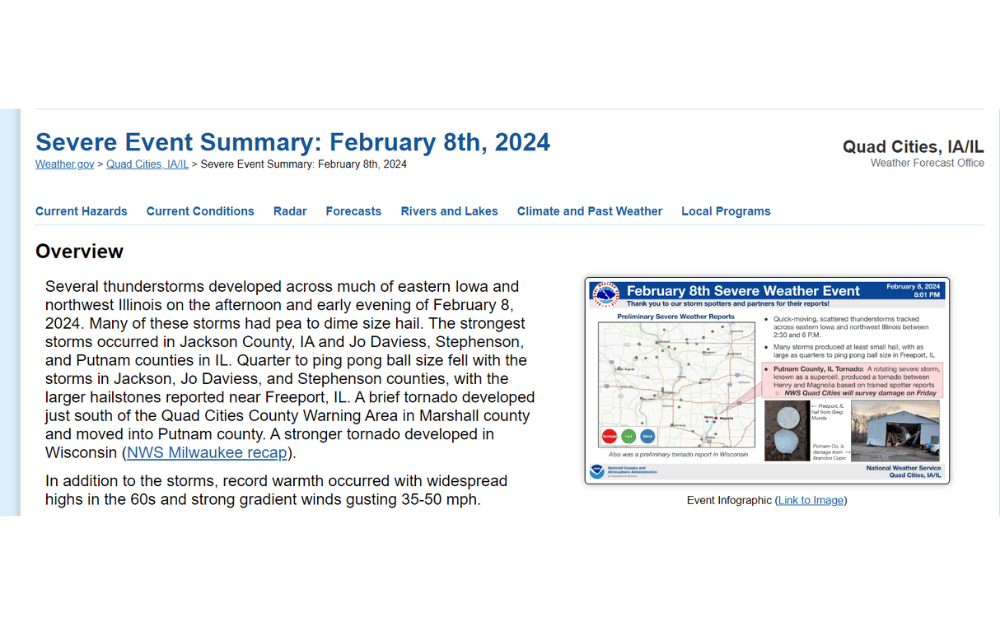While February isn’t typically associated with severe weather outbreaks in the United States, 2024 defied expectations. A rare and powerful storm system brought tornadoes and severe thunderstorms to parts of the country, particularly impacting the state of Wisconsin.
A Historic February Outbreak
On February 8th, 2024, southern Wisconsin witnessed an unprecedented event – multiple tornadoes touched down during the afternoon hours. This marked the first time the state had ever recorded a tornado in February, highlighting the unpredictable nature of weather patterns and the importance of staying prepared year-round.
The National Weather Service (NWS) reported two confirmed tornadoes, both causing significant damage:

- Evansville to Lake Koshkonong tornado: This EF-2 tornado, with estimated peak winds of 130 mph, caused widespread damage to homes and businesses along its path.
- Second, unnamed tornado: Details about this tornado are still emerging, but it reportedly caused damage to agricultural structures and trees.
The Role of Severe Thunderstorm Warnings
In the lead-up to the February 8th event, the National Weather Service issued severe thunderstorm warnings for the affected areas. These warnings alerted residents to the potential for damaging winds, large hail, and heavy rain, all of which can create dangerous situations.
While not explicitly mentioning the possibility of tornadoes, these warnings served as a crucial precautionary measure, prompting residents to take steps to protect themselves and their property. By following the guidance provided in the warnings, such as seeking shelter and securing loose objects, residents could potentially mitigate the impact of the severe weather.
Lessons Learned and Moving Forward
The 2024 February tornadoes serve as a stark reminder that severe weather can strike at any time, regardless of the season. Here are some key takeaways:
- Be prepared: Always stay informed about the weather forecast and be aware of potential threats in your area. Download the National Weather Service app for real-time alerts and updates.
- Take warnings seriously: When a severe thunderstorm warning is issued, don’t hesitate to take shelter and follow the recommended safety precautions.
- Have a plan: Develop a family emergency plan that outlines what to do in case of severe weather, including identifying safe shelter locations and having a communication plan in place.
By staying informed, prepared, and taking warnings seriously, we can all help to minimize the risks associated with severe weather events.
DON’T MISS: Japan Earthquake Video – New Year starts with Earthshaking
Additional Resources
- National Weather Service: https://www.weather.gov/
- Ready.gov: https://www.ready.gov/
